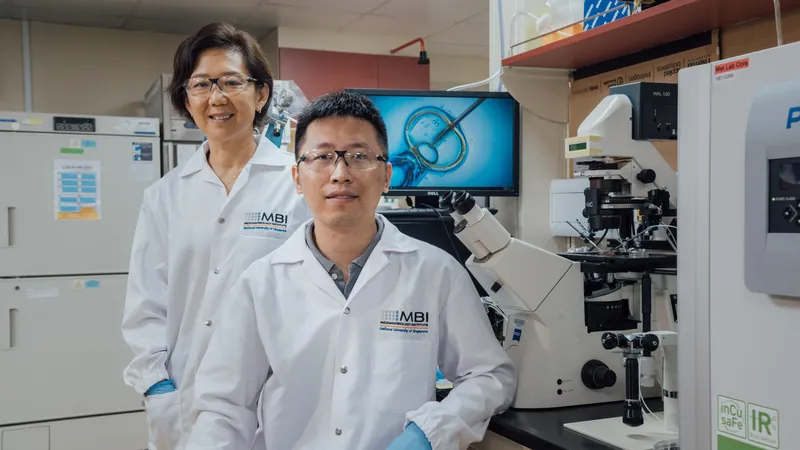
Breakthrough in Reproductive Science: NUS Researchers Unveil Game-Changing Method to Rejuvenate Aging Egg Cells!
2024-09-19
Author: Daniel
Introduction
In an exciting advancement for reproductive health, researchers from the Mechanobiology Institute (MBI) and the NUS Bia-Echo Asia Centre for Reproductive Longevity and Equality (ACRLE) at the National University of Singapore (NUS) have pioneered a revolutionary technique that enhances the reproductive capabilities of aged oocytes, or egg cells. This remarkable discovery could significantly improve outcomes for assisted reproductive technologies, including in-vitro fertilization (IVF), particularly for women who are delaying childbirth.
The Challenge of Aging Egg Cells
As many women are choosing to start families later in life, the natural decline in egg quantity and quality due to aging has emerged as a critical concern. The research team, led by Professor Rong Li and Dr. Wang Haiyang, explored the fundamental mechanics behind female reproductive aging. They found that the aging environment within the ovaries negatively impacts young oocyte quality and developmental potential.
Innovative Rejuvenation Method
Their innovative approach demonstrated that oocytes previously confined to an aged follicular environment could be 'rejuvenated' by relocating them into a younger, healthier follicular setting.
“The female reproductive system exhibits the fastest aging compared to other human systems,” stated Prof. Li. “This notion drives our quest to unlock the mysteries of reproductive aging and devise strategies to combat its detrimental effects.”
Scientific Findings
The researchers' findings were highlighted in Nature Aging on September 9, 2024, marking a significant milestone in reproductive science.
The Rejuvenation Process
What exactly happens in this rejuvenation process? Ovarian follicles, which are essential for oocyte maturation, contain granulosa cells that nourish and support the immature egg cells. The study revealed compelling evidence that granulosa cells from aged follicles accumulated signs of aging, such as DNA damage.
When the researchers created hybrid ovarian follicles by transitioning aged oocytes to a younger follicular environment, they observed substantial improvements in the quality and viability of these eggs.
Hybrid Follicle Technique
This groundbreaking technique involved extracting oocytes from older models and transplanting them into follicles harvested from younger models, effectively creating a hybrid that benefits from the youthfulness of its surroundings. The revitalized oocytes demonstrated enhanced metabolic function and improved mitochondrial health — crucial factors for energy production and overall cellular vitality.
Resulting Benefits
One of the most astounding outcomes was that the oocytes undergoing this rejuvenation displayed a significantly reduced risk of chromosomal abnormalities during maturation, a key aspect often responsible for miscarriage and genetic disorders in offspring. The success rate for embryonic development post-IVF with rejuvenated oocytes surged to three times higher compared to those from unaltered, aging environments.
Future Implications
With the promising potential of this technique, the NUS research team has submitted a patent application for their innovative method, marking a crucial step toward transforming assisted reproductive technologies.
This significant research was supported by funding from ACRLE, NUS Medicine, and the National Research Foundation of Singapore. The implications extend beyond the lab; as societal norms shift, couples looking to start families later could find hope in this scientific breakthrough, potentially reviving dreams of parenthood despite the challenges posed by age.



 Brasil (PT)
Brasil (PT)
 Canada (EN)
Canada (EN)
 Chile (ES)
Chile (ES)
 España (ES)
España (ES)
 France (FR)
France (FR)
 Hong Kong (EN)
Hong Kong (EN)
 Italia (IT)
Italia (IT)
 日本 (JA)
日本 (JA)
 Magyarország (HU)
Magyarország (HU)
 Norge (NO)
Norge (NO)
 Polska (PL)
Polska (PL)
 Schweiz (DE)
Schweiz (DE)
 Singapore (EN)
Singapore (EN)
 Sverige (SV)
Sverige (SV)
 Suomi (FI)
Suomi (FI)
 Türkiye (TR)
Türkiye (TR)